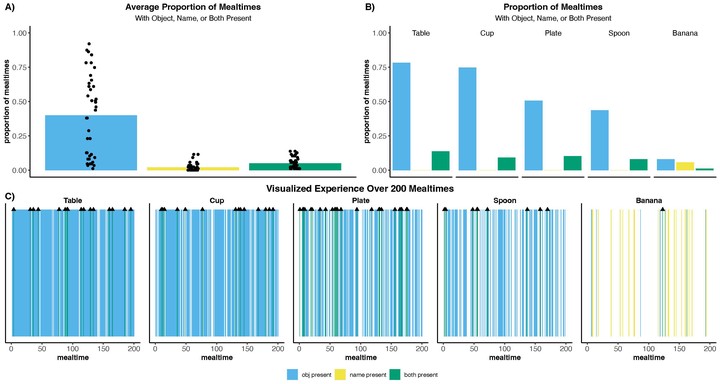Real-world statistics at two timescales and a mechanism for infant learning of object names

Abstract
Infants begin learning the visual referents of nouns before their first birthday. Despite considerable empirical and theoretical effort, little is known about the statistics of the experiences that enable infants to break into object–name learning. We used wearable sensors to collect infant experiences of visual objects and their heard names for 40 early-learned categories. The analyzed data were from one context that occurs multiple times a day and includes objects with early-learned names: mealtime. The statistics reveal two distinct timescales of experience. At the timescale of many mealtime episodes (n = 87), the visual categories were pervasively present, but naming of the objects in each of those categories was very rare. At the timescale of single mealtime episodes, names and referents did cooccur, but each name–referent pair appeared in very few of the mealtime episodes. The statistics are consistent with incremental learning of visual categories across many episodes and the rapid learning of name–object mappings within individual episodes. The two timescales are also consistent with a known cortical learning mechanism for one-episode learning of associations: new information, the heard name, is incorporated into well-established memories, the seen object category, when the new information cooccurs with the reactivation of that slowly established memory.